Physical Address
304 North Cardinal St.
Dorchester Center, MA 02124
Physical Address
304 North Cardinal St.
Dorchester Center, MA 02124
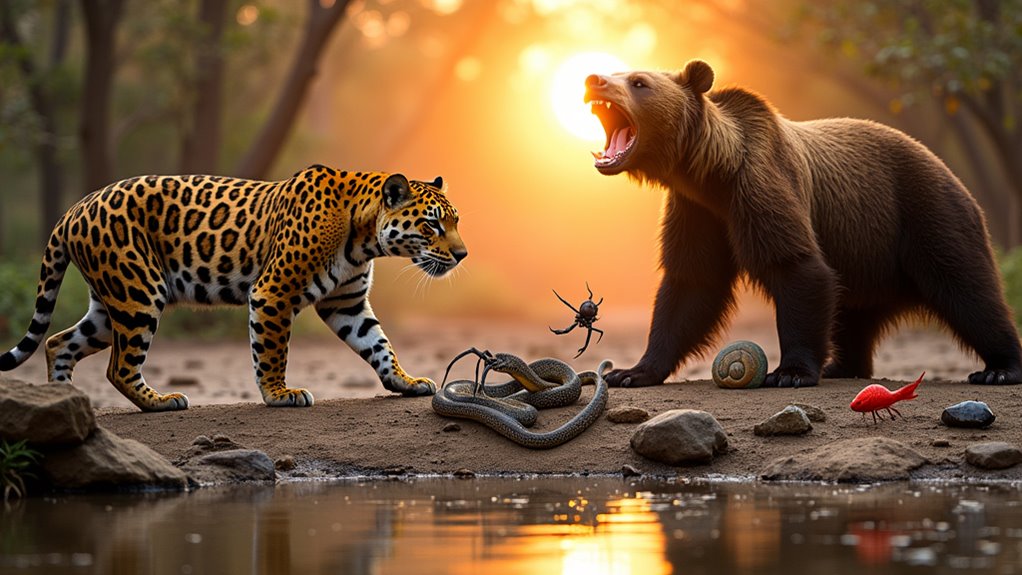
Lurking in Argentina's diverse landscapes are seven deadly creatures whose venomous bites and silent attacks could turn your adventure into a nightmare.
Argentina’s most dangerous wildlife includes the deadly jararaca and South American rattlesnake with their potent venom, vibrant coral snakes hiding in the Gran Chaco, and stealthy black widow spiders lurking in dark corners. You’ll also need to watch for Patagonia’s pumas that silently stalk their prey, and the yacare caiman patrolling wetlands. Understanding these creatures’ habitats and behaviors will be your best defense during your Argentine adventures.
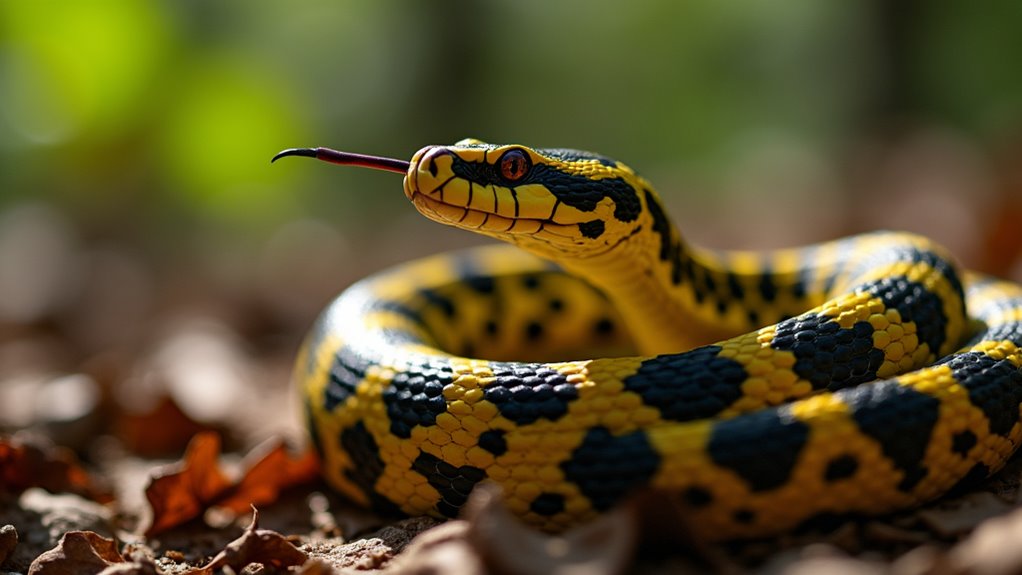
Argentina’s diverse ecosystems harbor a variety of potentially dangerous creatures that demand respect from locals and visitors alike. When exploring this beautiful country, you’ll want to be aware of several notable threats.
From jungle to pampas, Argentina’s wild inhabitants command caution and respect from all who venture into their domain.
The South American Rattlesnake and Coral Snake top the list with their potent venom, while Black Widow spiders can deliver painful, though rarely fatal, bites. In northern regions, powerful jaguars and cougars roam, though they typically avoid human contact.
Water-based dangers include Yacare Caimans with their powerful jaws and sharp teeth. The South American Rattlesnake is particularly dangerous with its 12% fatality rate if medical treatment isn’t received promptly. In marine environments, stonefish pose a serious threat with their extreme toxicity, while triggerfish can inflict painful bites.
These seven animals represent the most significant wildlife hazards you might encounter while adventuring through Argentina’s varied landscapes.
Among the most feared reptiles in South America, the Jararaca distinguishes itself as Argentina’s deadliest pit viper. Reaching up to 1.5 meters in length, this venomous snake has a distinctive triangular head and dark hourglass markings on its brown or gray body. While they’re typically found in northern Argentina’s Misiones province, their range extends through northeastern Paraguay and southern Brazil.
You’ll find them lurking in humid forests and farmlands, especially near water sources.
If you’re exploring Argentina’s countryside, especially at night, watch your step—these camouflaged predators blend perfectly with forest floor vegetation.
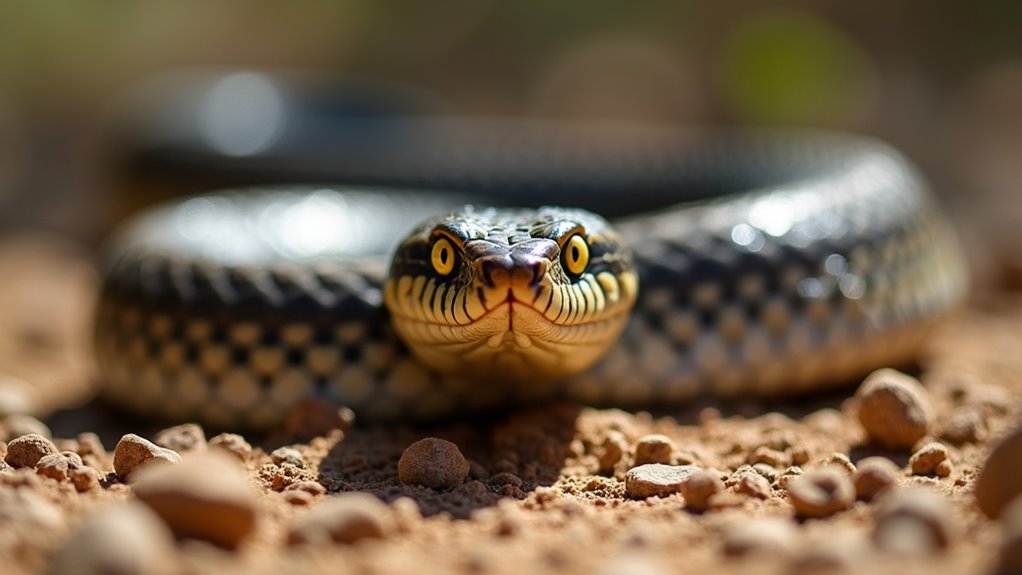
The South American rattlesnake stands as one of the most formidable serpents you’ll encounter in Argentina’s diverse landscapes. Found primarily in the country’s northern regions and Chaco areas, this deadly reptile adapts to various environments, from savannas to dry forests and scrublands.
Growing up to 1.8 meters long, it’s immediately identifiable by its distinctive tail rattle—a warning you’d be wise to heed. Its highly potent neurotoxic venom can cause paralysis and respiratory failure if you’re bitten. This venomous predator primarily feeds on rodents and small mammals that are abundant in its natural habitat.
Unlike other rattlesnakes, its venom targets your nervous system more aggressively. While fatalities are rare with proper medical attention, you’ll need antivenom quickly.
If you’re exploring Argentina’s countryside, watch for this ambush predator in drier, open areas.
While the rattlesnake warns with its distinctive sound, you’ll find an equally dangerous but more colorful threat lurking in Argentina’s Gran Chaco region. The Argentinian coral snake (Micrurus pyrrhocryptus) prefers the dry, arid habitats of the Chaco ecosystem, where its striking black bands separated by thin yellowish-white rings serve as nature’s warning sign. As a member of the Elapidae family, this species shares characteristics with other highly venomous snakes including cobras and mambas.
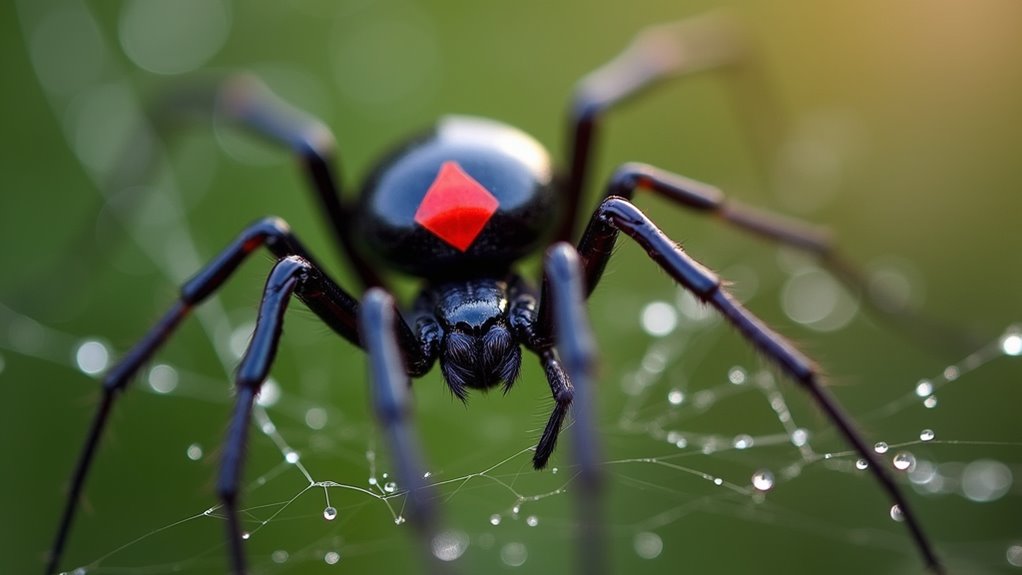
Hidden in dark corners across Argentina, black widow spiders represent one of the country’s most feared arachnids despite their diminutive size. You’ll recognize these dangerous residents by their glossy black bodies and distinctive red hourglass marking on their abdomen.
If you’re exploring Argentina’s diverse landscapes, from urban areas to forests, you might encounter these solitary creatures in undisturbed, shadowy spots. Their webs consist of irregular, sticky fibers that effectively trap small insects which make up their primary diet. They’re not typically aggressive but will bite when threatened.
Their venom contains powerful neurotoxins that can cause intense pain, muscle cramps, and breathing difficulties. While rarely fatal, a bite requires immediate medical attention.
To avoid encounters, keep your living spaces clutter-free, seal potential entry points, and maintain well-lit areas. Remember, they’re most active at night when hunting for insect prey.
Stalking silently through Patagonia’s varied landscapes, pumas reign as Argentina’s most formidable predator, commanding both respect and caution from locals and visitors alike. From mountains to steppes, these adaptable cats thrive in diverse habitats across Patagonia, traveling up to 13 kilometers daily within their extensive territories. In Argentina’s Chubut province, pumas are heavily persecuted through bounty hunting programs that pay hunters approximately $30 per kill to reduce livestock predation.
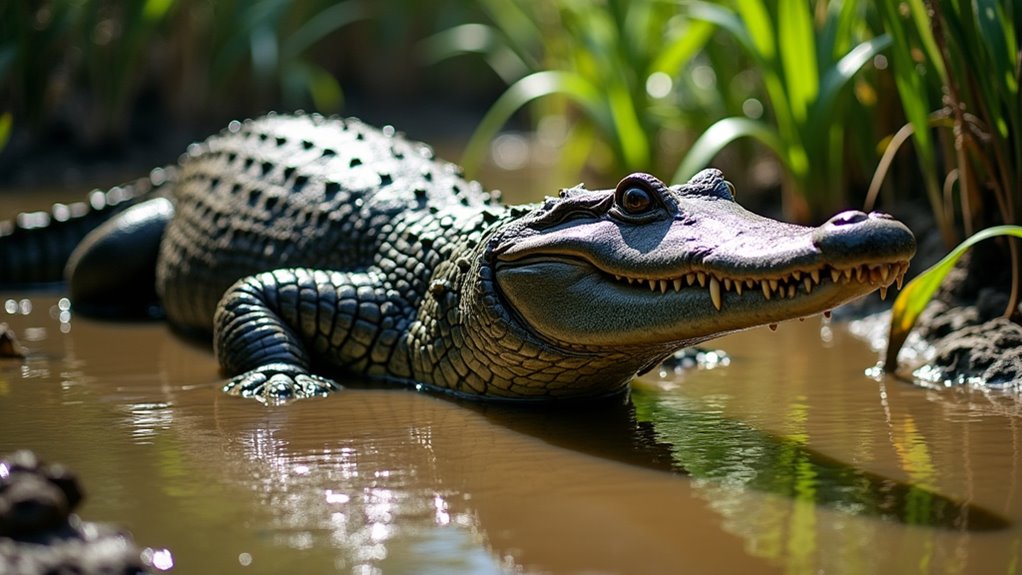
Lurking beneath the surface of Argentina’s extensive wetlands, the yacare caiman commands attention with its armored body and impressive dental display. You’ll find these reptiles primarily in northeastern Argentina, particularly throughout the Pantanal region where they’re remarkably abundant.
Though generally not aggressive toward humans, these powerful predators deserve respect. Males can reach 10 feet in length and weigh up to 110 pounds, with jaws powerful enough to capture fish and other prey with ease. With an average of 74 teeth, this species has earned the nickname “piranha caiman” due to its lower teeth piercing holes in the upper jaw.
If you’re exploring Argentina’s river systems, maintain a safe distance—caimans will typically avoid humans but can become defensive if threatened.
Despite previous endangerment from overhunting for leather, yacare caimans have rebounded considerably. Today, habitat destruction poses a greater threat than human encounters to these impressive wetland guardians.
You’ll need to exercise caution when exploring Argentina’s diverse landscapes. From venomous serpents like the jararaca to stealthy pumas, these dangerous creatures deserve your respect, not your fear. Remember, “forewarned is forearmed” when venturing into their territories. Most wildlife encounters remain peaceful if you’re prepared and keep your distance. Argentina’s natural beauty is well worth experiencing—just do so with awareness of these magnificent but potentially hazardous animals.